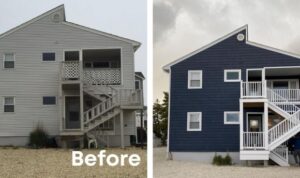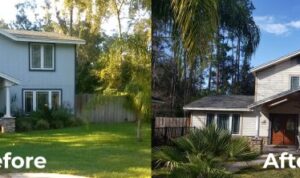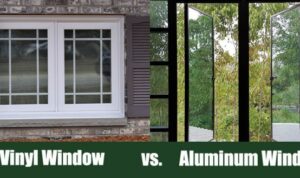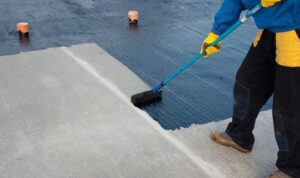Dive into the world of waterproof exterior paint solutions with this comprehensive guide. From different types available to factors to consider when choosing the right paint, this topic will provide valuable insights for homeowners and DIY enthusiasts alike.
Learn about the benefits of using waterproof paint, the preparation and application process, and why it's essential for protecting your property against the elements.
Types of Waterproof Exterior Paint Solutions
When it comes to waterproof exterior paint solutions, there are different types available in the market, each with its own features and benefits. Let's explore the options and compare the effectiveness of acrylic-based versus elastomeric waterproof exterior paints.
Acrylic-Based Waterproof Exterior Paint
- Acrylic-based waterproof exterior paint is water-resistant and provides excellent durability against harsh weather conditions.
- It offers good adhesion to various surfaces, making it suitable for different types of exterior walls.
- Easy to apply and dries quickly, allowing for faster completion of painting projects.
Elastomeric Waterproof Exterior Paint
- Elastomeric waterproof exterior paint is highly flexible and can stretch to accommodate the movement of the building structure.
- It forms a thick, elastic membrane that helps prevent water infiltration and protects the exterior walls from moisture damage.
- Provides superior waterproofing properties, ideal for areas prone to heavy rainfall or humidity.
Comparison of Application Methods
- Acrylic-Based:Can be applied with a brush, roller, or sprayer. Requires a clean and dry surface for proper adhesion.
- Elastomeric:Best applied with a thick-nap roller to ensure adequate coverage and thickness. It is essential to follow the manufacturer's instructions for proper application.
Factors to Consider When Choosing Waterproof Exterior Paint
When selecting waterproof exterior paint solutions for your home, there are several key factors that homeowners should consider to ensure the best results. From durability and weather resistance to compatibility with different surfaces, making the right choice can have a significant impact on the longevity and appearance of your property.
Importance of Durability and Weather Resistance
- Choose a paint that is specifically formulated for exterior use to withstand harsh weather conditions such as rain, snow, and UV exposure.
- Look for paints that offer high durability to prevent cracking, peeling, and fading over time.
- Consider the climate of your region and select a paint that is suitable for the specific weather patterns in your area.
Assessing Compatibility with Different Surfaces
- Ensure that the waterproof paint you choose is compatible with the material of your exterior surfaces, whether it is wood, stucco, brick, or concrete.
- Some paints may require a primer or specific preparation steps for certain surfaces, so make sure to follow the manufacturer's instructions carefully.
- Consult with a professional or paint specialist if you are unsure about the compatibility of the paint with your exterior surfaces.
Choosing the Right Color and Finish
- Consider the architectural style and color scheme of your home when selecting a paint color to ensure a cohesive and attractive look.
- Opt for lighter colors to reflect heat and prevent fading, especially in sunny climates.
- Choose a finish that complements the aesthetic of your property, whether you prefer a matte, satin, or glossy appearance.
Preparation and Application of Waterproof Exterior Paint
Before applying waterproof exterior paint, it is crucial to properly prepare the surface to ensure a durable and long-lasting finish. This involves several steps and the use of specific tools and materials.
Surface Preparation
- Clean the surface: Remove any dirt, dust, or debris by washing the exterior surface with a mild detergent and water. For stubborn stains, consider using a pressure washer.
- Repair any damage: Fill in cracks, holes, or gaps with an appropriate filler or sealant. Allow it to dry completely before proceeding.
- Sand the surface: Smooth out rough areas and ensure proper adhesion by lightly sanding the surface with sandpaper.
- Prime the surface: Apply a primer specifically designed for exterior surfaces to improve adhesion and enhance the waterproofing properties of the paint.
Tools and Materials
- Paintbrushes and rollers: Choose high-quality brushes and rollers suitable for the type of paint being used.
- Paint sprayer: For larger areas, a paint sprayer can provide a more even and efficient application.
- Waterproof exterior paint: Select a high-quality waterproof paint suitable for the specific exterior surface being painted.
- Painter's tape and drop cloths: Use painter's tape to protect areas you do not want to paint, and cover surrounding surfaces with drop cloths to prevent accidental spills.
Application Techniques
- Start from the top: Begin painting from the highest point of the exterior surface and work your way down to prevent drips and streaks.
- Apply multiple coats: Follow the manufacturer's instructions regarding the number of coats needed for optimal waterproofing and coverage.
- Allow for proper drying time: Ensure each coat is completely dry before applying the next one to avoid issues with adhesion and finish.
Maintenance and Reapplication
- Regular inspections: Periodically check the exterior surface for signs of wear, peeling, or damage that may require touch-ups or reapplication of paint.
- Proper cleaning: Clean the painted surface regularly to remove dirt and debris that can compromise the waterproofing properties of the paint.
- Reapply as needed: Depending on the quality of the paint and the exposure of the surface to the elements, consider reapplying waterproof exterior paint every few years to maintain its effectiveness.
Benefits of Using Waterproof Exterior Paint Solutions

Using waterproof exterior paint solutions offers a range of benefits that go beyond just enhancing the appearance of a property. Here are some advantages of using waterproof paint for exterior surfaces:
Protection Against Moisture and Environmental Factors
- Waterproof exterior paint forms a protective barrier that prevents moisture from seeping into the walls, reducing the risk of mold and mildew growth.
- It also shields the surface from UV rays, preventing fading, blistering, and other damage caused by sun exposure.
- Waterproof paint solutions are designed to withstand harsh weather conditions, such as rain, snow, and extreme temperatures, ensuring long-lasting protection for the exterior of a property.
Enhanced Aesthetic Appeal and Value
- By using waterproof exterior paint, property owners can maintain the appearance of their buildings for longer periods, saving on maintenance costs in the long run.
- Waterproof paint comes in a variety of colors and finishes, allowing for customization and enhancing the overall aesthetic appeal of a property.
- Properties with well-maintained exteriors through waterproof paint solutions tend to have higher resale value and attract more potential buyers or tenants.
Outcome Summary
In conclusion, waterproof exterior paint solutions offer not only protection but also aesthetic enhancement for your property. With the right knowledge and application, you can ensure a durable and appealing finish that stands the test of time.
Query Resolution
What are the key factors to consider when choosing waterproof exterior paint?
Homeowners should consider durability, weather resistance, compatibility with different surfaces, and color/finish options.
What are the benefits of using waterproof exterior paint?
Waterproof paint protects against moisture, UV rays, and enhances property value and aesthetic appeal.
What are the main differences between acrylic-based and elastomeric waterproof exterior paints?
Acrylic-based paints are more cost-effective but may not be as durable as elastomeric paints, which offer better flexibility and waterproofing properties.






